It’s too hard to genuinely grow a portfolio of only Aussie shares
I have for some time advocated that whilst Australian dividend paying shares might be some of the best income opportunities available to Australian tax residents, the ability to grow your capital materially using a portfolio of exclusively Australian shares is much more difficult than using international shares, US shares in particular.
This has recently become much clearer to me as I have watched a portion of my personal portfolio stay stagnant. That piece of my portfolio is the piece I have invested in exclusively Aussie shares.
I know, I know....I tell everyone not to buy Aussie shares. Except that I don't say that – what I say is, don’t buy Aussie shares for growth. I stand by that. Don’t.
I have those Aussie shares for income, and they’ve done the job. But as suspected, the balance has hardly moved, certainly compared to my growth portfolio. I’ve been waiting for my Aussie portion to go over a milestone number for some time, about 8 months to be exact, and it just won’t get there.
Because the typical portfolio of Aussie shares struggles to grow, and this portfolio of mine is very typical – all of the big names, especially the big income names, they’re all in there. Notice I didn’t say that all Aussie shares don’t grow, because some do, especially some small caps. But again, the typical collection of Aussie shares that many investors have, that portfolio struggles to grow.
Even when they do grow, they don’t grow at the rate that justifies the risk because readily available and similar alternatives are growing at a much faster rate. That is, the risk-adjusted return of too many ASX-shares is lower than it should be.
I’ll show you, 3 different ways.
The First Way
Vanguard’s 30-year asset class charts have become famous. They’re released every year, in every region they operate in, including in Australia. Here below you will find the 2022 version, the 2023 version, and the most recently released 2024 version. If you’re an Aussie-only investor, none of this news is good for you, especially if you’ve done what lots of people have done and you’ve exclusively gone for Aussie shares and Aussie property.
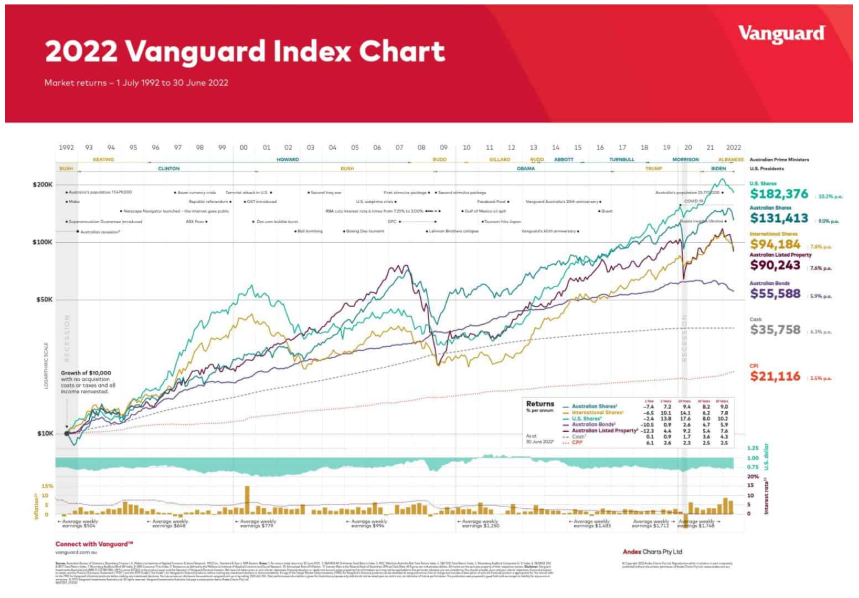
I apologise that I’m a broken record on this topic, but the truth is, I see way too many portfolios that are exclusively Australian shares. And balance sheets that are almost exclusively Australian shares and Australian real estate. And often in precisely the wrong environments -- I can’t even count how many SMSFs I’ve seen for mid-career professionals that are full of Aussie dividend payers.
Where’s the growth coming from??
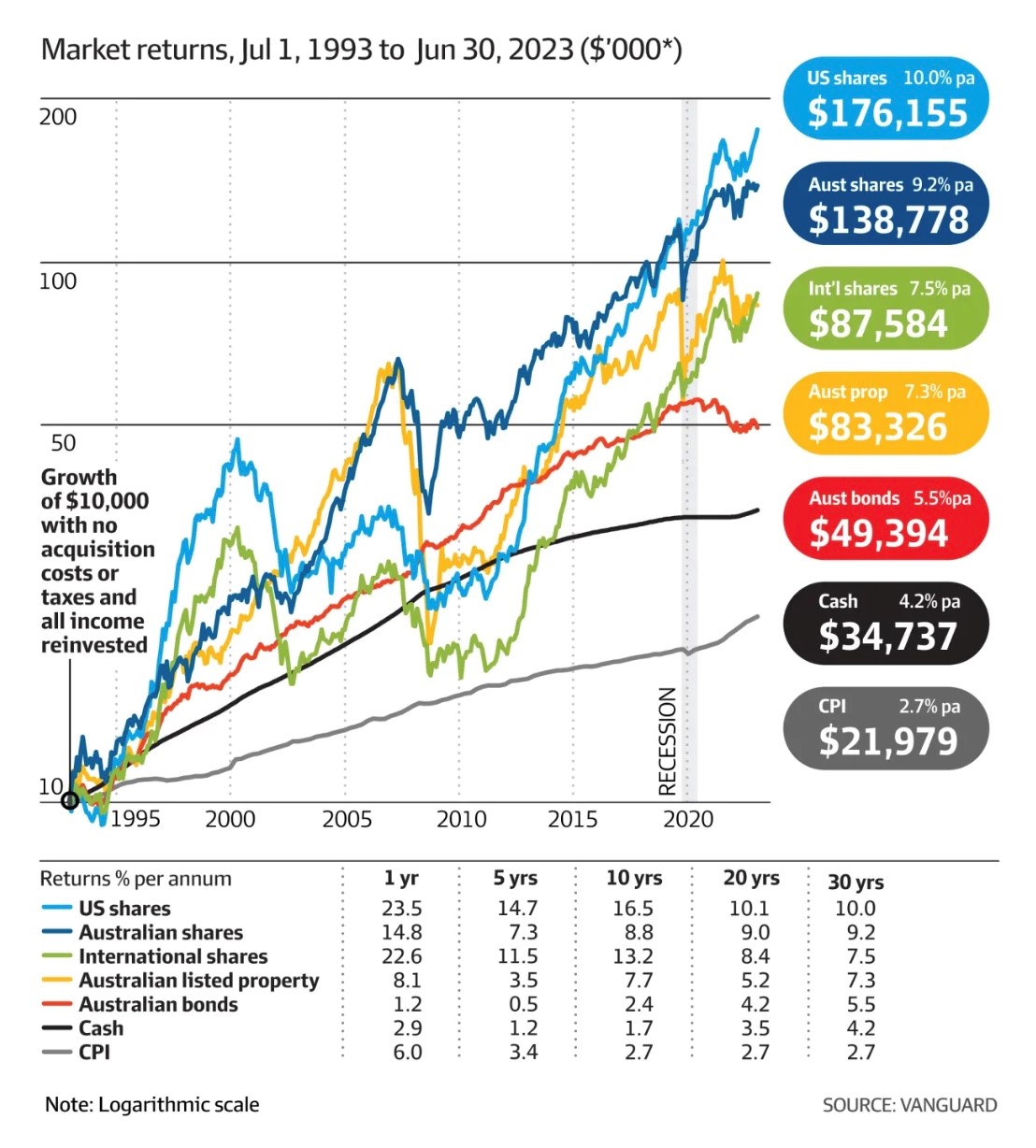
That US shares have outperformed literally everything in literally every timeframe should be enough to have financial advisers heading for the New York Stock Exchange and the NASDAQ. But no – it’s more ASX 20, and ASX 50, and more small cap miners which have an almost-zero chance of delivering any value in aggregate. One will fly, one always does, but as a group, they are most likely going to underperform.
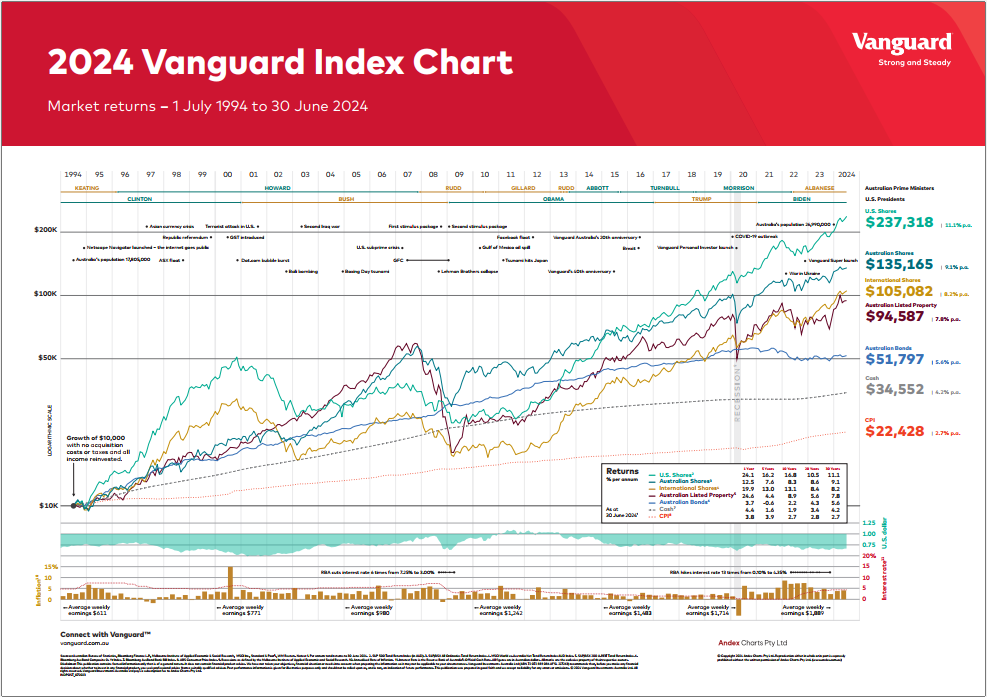
The Second Way
I'd guess it’s consensus that the chances of making outsized returns versus the ASX 200 by trading stocks inside the ASX 200, those chances are near zero because it our market so well covered by investors, by analysts, by the media. Especially in a small market like ours.
Let’s take a look at that thesis, and I should repeat – I’m not saying that there are no Aussie stocks that grow. That’s patently not true -- look at RRL, ASB, DRO, REA, CBA, and LYC, all big winners. What I’m saying is, if you own any of those big winners, it’s almost certain you own something else in the ASX 200 orbit that has been nowhere near as good. Or it’s just been flat out bad.
No one filled the boat only with LYC -- that investor probably also owns MIN, BHP, STO, RIO, and maybe WDS. All of a sudden, your weighted return looks pretty pedestrian.
Here is a series of charts that compare the ASX 200 (green line) to the ASX mid-cap index (pink line), the ASX small ordinaries (blue line, at the bottom), the ASX 50 (yellow line), the S&P 500 (purple line), and the Nasdaq 100 (teal line, at the top).
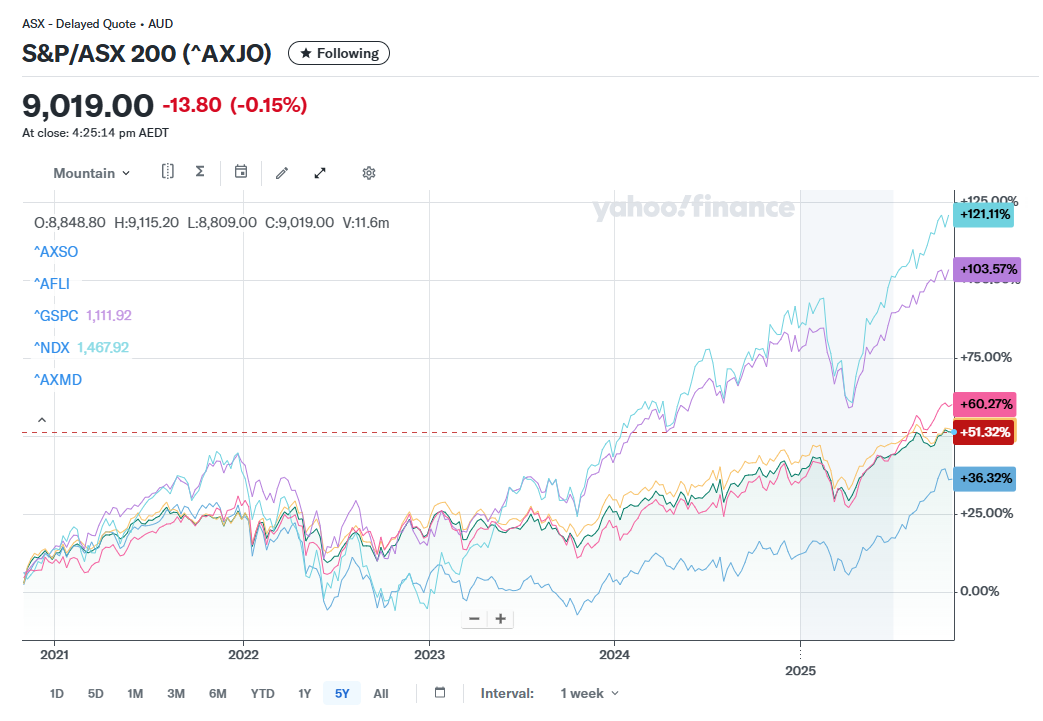
The chart above is over 5 years, and below we have longer timeframes.
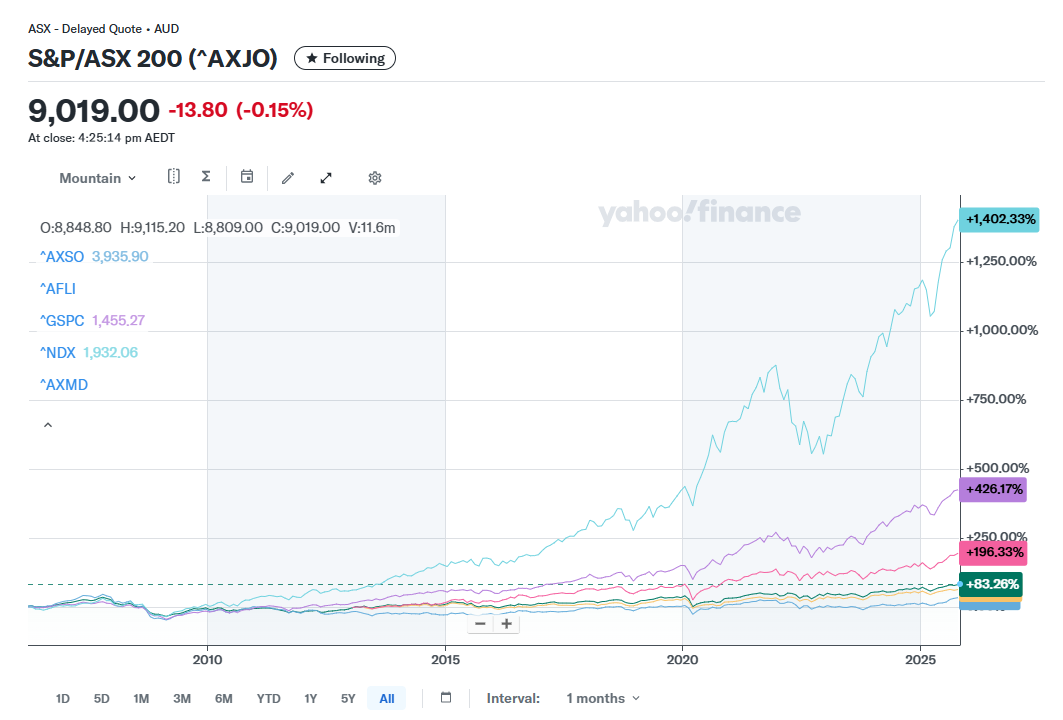
The same chart above covers 20 years, and below covers 30 years.
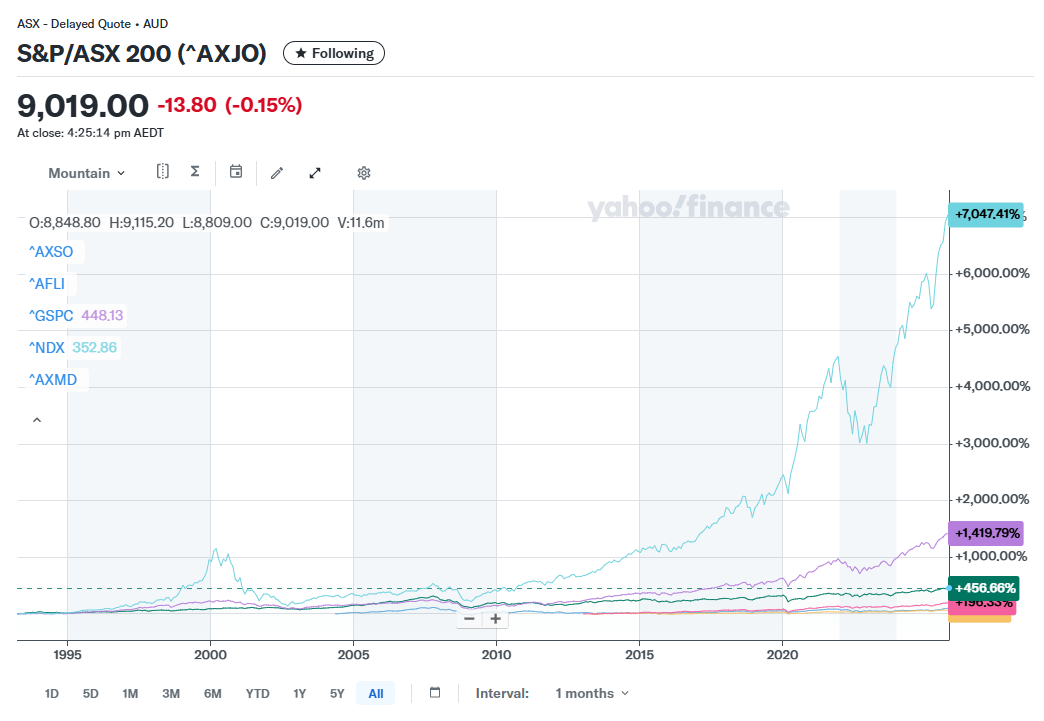
As you can tell, the results aren’t even close – whether it’s 5 years, 20 years, or 30 years, the US indices, when comparing for growth (there’s no income in these numbers), have destroyed the Aussie markets over time.
Now, someone reading this is asking – what about the divvies? Good news, this last chart includes the divvies.
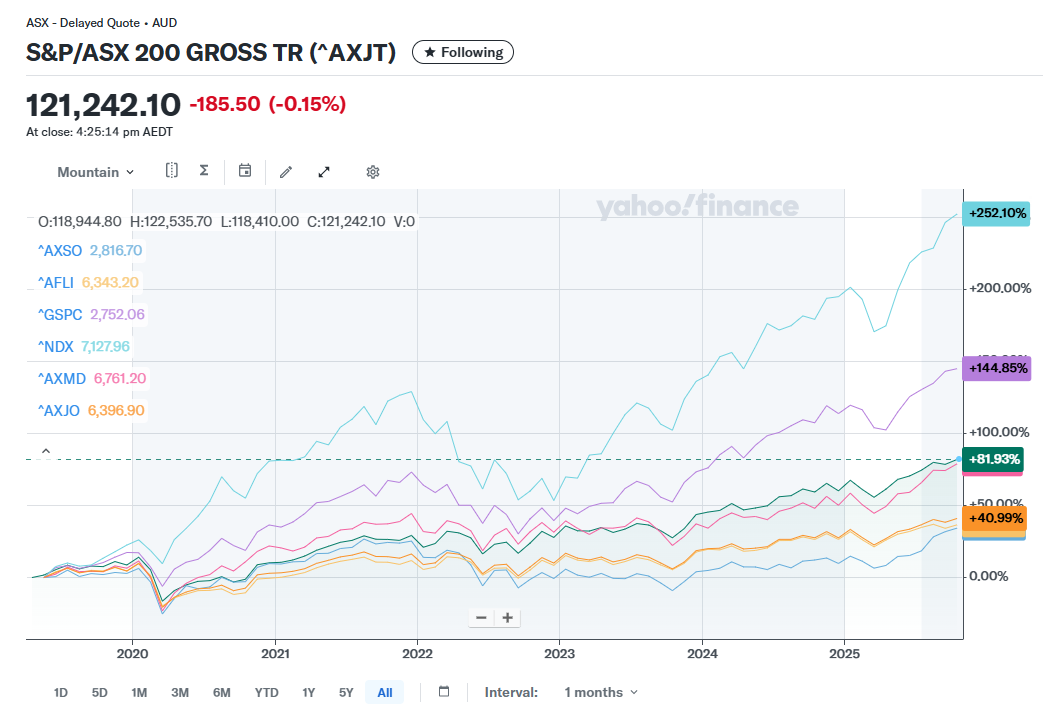
The Third Way
This is a little simplistic, granted, but still, this factoid tells the same story.
Aussie super funds invest globally, for sure, but they are still chocked to the gills with Aussie equities. Best case, they have significantly more Aussie equities than they should given Australia is just 1.54% of the MSCI ACWI index.
This is a table of 5 of the biggest super funds in Australia - you know them all - and the performance of their high growth option matched against the ASX 200, the S&P 500, and the Nasdaq 100. I’m not trying to suggest that you should concentrate in just a single investment like that - although truthfully, given it's an index, it's not a terrible idea - but I am trying to demonstrate that super funds will have about a third Aussie shares in their high growth options, and partly because of that, those high growth options markedly underperform other readily available high growth options in the US.
| Annual returns |
Super 1 | Super 2 | Super 3 | Super 4 | Super 5 | ASX 200 | S&P 500 | NDQ100 |
| 1 year | 11.68% | 12.79% | 10.61% | 12.26% | 14.18% | 10.52% | 22.78% | 28.96% |
| 5 years | 10.47% | 12.02% | 9.97% | 12.23% | 10.75% | 12.90% | 18.01% | 18.73% |
| 10 years | 9.56% | 9.94% | 8.84% | 10.11% | 10.12% | 9.96% | 15.70% | 20.51% |
The Last Word
Whilst I stand by the main thrust of this piece -- which is that regardless that in Australia we massively overweight Aussie stocks, exposure to the US is much better for growth than exposure to Australian stocks -- the truth is, just as valuable is exposure to the right sectors, regardless of the market.
For example, here is a chart of the S&P 500 compared to the Nasdaq 100 for the last 5 years. I’ve also added cybersecurity exposure, momentum exposure, and factor rotation exposure.
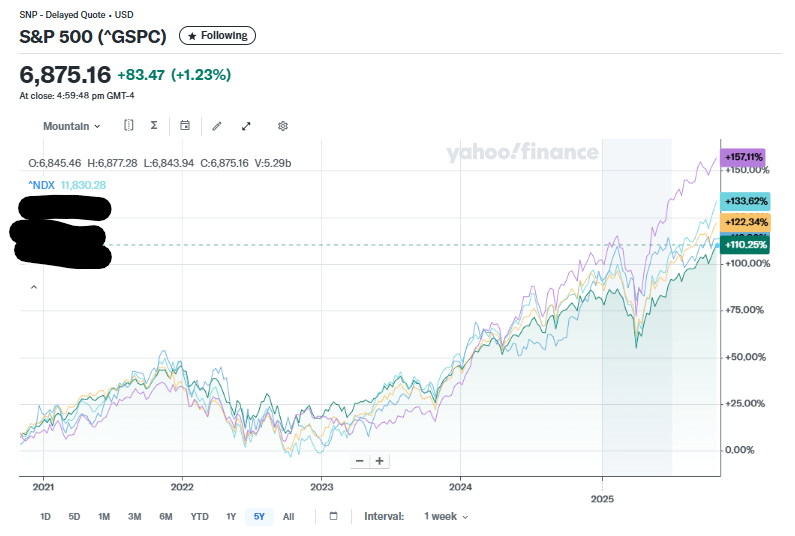
All three areas of the market have actually outperformed the S&P 500 over that 5-year span. Not quite the Nasdaq 100, but momentum is the top performer. And it’s not a coincidence that the best performing sectors are full of US exposure. Interestingly, there is not one single Australian holding in any of the three exposures I’ve added into this chart.
Not one.
Conclusion
The waves that are driving global growth, and global innovation, are all based in the US. Clearly China is a worthy competitor in some areas -- renewables and EVs stand out -- but the old truth cycle genuinely has to break before I’ll stop believing it. That old truth cycle is - the Americans invent it, the Japanese refine it, the Chinese copy it, and the Europeans regulate it.
It's true that China is slowly changing towards becoming more of an innovator, but en masse, it is not there. Yet.
Think about today’s global growth industries – media, finance, tech, entertainment, healthcare, sport, culture, and of course, AI. It’s American companies you think of first. The US lags in three global growth industries -- in renewables, in EVs, and in semi-conductors. But during the Biden Presidential term, the US Congress passed US$2 trillion of funding that was aimed at dominating, you guessed it, in renewables, in EVs, and in semi-conductors.
If you need income, by all means, fill your boots with Aussie dividend payers, and their franking credits -- it's possibly one of the best income markets in the world. But if you're an early-to-mid-career professional and you want (more like need??) growth in your super or in any other investment vehicle, there is no other market to focus on.
Just go to the US.
Good luck out there.
5 topics

